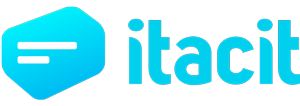Take two minutes right now and think of the most challenging distributed workforce communications scenario you can think of. Don’t overthink it. For some of you, I am sure two minutes isn’t enough to list all the challenges you can come up with. But let’s just start with a simple brainstorm. Go ahead, I’ll wait here.
OK, time’s up.
How many of these made it onto your list?
-
- Large, distributed workforce.
- Multiple sites spread across a big geography.
- 24/7 shift work.
- Employee roles that make it hard to keep up with email and intranet updates.
- Limited options to tailor communications to employees’ needs.
- Unclear vision or ownership of employee experience for the entire organization.
If you found yourself nodding as you read this list, don’t worry. You are not alone.
Even before the World Health Organization declared COVID-19 a pandemic on March 11, 2020 and the resulting effects of remote working around the world, maintaining an effective and meaningful distributed workforce communications strategy has been elusive.
According to a 2018 State of the Sector report from Arthur J Gallagher & Co, 60 per cent of companies do not have a long-term internal communications strategy.
In my experience over a 17-year career in distributed workforce communications, I’ve seen these challenges in the leading private sector employers, and the biggest public sector organizations.
In a previous role I worked for a natural gas and electricity distributor. At least one-third of employees at this private sector company had jobs that were in the field, and not in an office setting.
Take a moment and imagine a field employee: She’s a power line technician working 50 feet in the air on a rainy day, inside the bucket of a cherry-picker, fixing downed transmission lines so our customers can turn their lights on, and cook dinner.
How much is she thinking about the latest “time-sensitive” executive memo that’s been posted to the company intranet? What is the likelihood that her job allows for meaningful information exchange via emails and intranet bulletins?
There isn’t a magic bullet to reach a distributed workforce.
And if you think that print communications is a magic bullet, take this experience I had in a corporate communications team in the private sector. In this company, the internal communications department produced an employee magazine 10 times per year. It was a hard-copy, magazine-style publication snail-mailed to each work site across the province. The readership of the publication struggled to find a following, so much so that one customer contact center asked to stop getting the newsletters, to avoid having boxes and boxes of unread copies taking up space.
The employee feedback? The newsletters just weren’t being read, and not something employees found useful or engaging, hence the unopened boxes month after month.
In the health care sector (where I have spent most of my career), these employee communication and experience challenges are magnified when you look at how many different sites employees work out of, the 24/7 nature of the services provided, and the enormous differences in roles, functions, and work environments.

The gap between assumption and reality in regards to distributed workforces.
For me, one experience a few years ago really showed me insight of an employee’s lived experience with the company’s communication and engagement efforts, and the gap we have between assumption and reality.
My team was working on promoting an annual employee health and wellness challenge at our organization. It was a challenge that attracted more voluntary staff participation than any other activity or service the organization offered – second only to the self-serve portal where employees sign in to get their online pay stubs.
My team got out of their offices and went to a hospital across town to work with a group of front-line health workers on a video promoting the challenge. It turns out this team had never heard of this annual event. Not ever. They were only learning about it because our team brought it to their attention and explained what the video was for. When we said that the details were available on the intranet, their answer was:“Oh that’s why we don’t know about this. We don’t read that.”
Think about that. If an activity that attracts more employee participation than almost anything else isn’t even on the radar of staff, how are employees really being served?
What changes can we as communications leaders and strategists make to influence and shift culture?
So enough about what we know isn’t working well. What can we do? What changes can we as communications leaders and strategists make to influence and shift culture?
-
- What if we got out of our own usual spaces, and met employees in their work environments?
- What if we took the time to understand how employees encounter and consume information from the company?
- What if we designed our communications with empathy and a user-centric lens?
- What if we created for impact first?
The practice of employee communications has a great opportunity to make use of the substantial research and practice that’s been done connecting user experience, service design, and employee engagement. This doesn’t mean your employee communications department needs to spend funds it doesn’t have on expensive studies or high-priced external training. The most important first step is to adopt a mindset of creating and communicating for impact, informed by your user needs. With this principle guiding your actions, look for incremental steps or data collection you can do (e.g. if you can’t get sign-off for a brand new enterprise social intranet, do some employee research about how asynchronous, mobile workplace communication tools might help shift workers stay connected)
It’s hard to influence change. The good news is you’re not starting from scratch. This path has been traveled before, and you have evidence and data on your side. Creating with empathy and impact, informed by strategies that are proven to work, is a principled approach that you can feel proud to champion.
Good luck.











